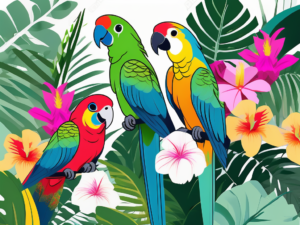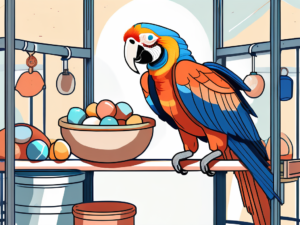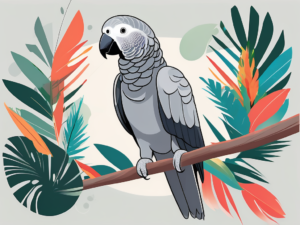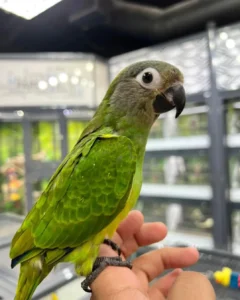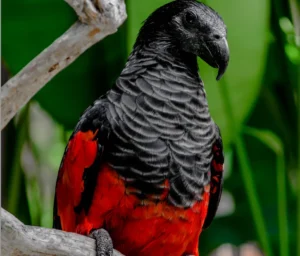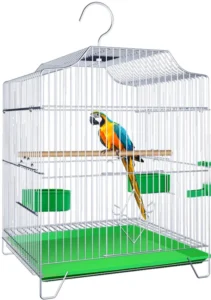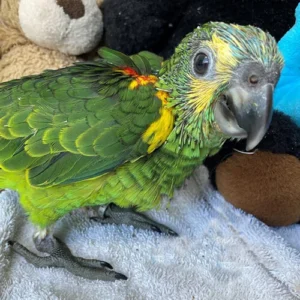Discover the vibrant world of Camelot Macaws in our latest article! Explore the unique characteristics, care tips, and where to find your perfect feathered companion for sale.
When it comes to brightening up your home with a touch of vibrant personality, few pets can compare to the stunning Camelot Macaw. These parrots not only capture attention with their dazzling colors but also exhibit intelligence, charm, and companionship. In this article, we’ll guide you through understanding, preparing for, choosing, and caring for your very own Camelot Macaws for sale.
Understanding the Camelot Macaws for sale
The Origin and History of Camelot Macaws
The Camelot Macaw is a hybrid parrot created by crossing a Scarlet Macaw and a Camelot Macaw. This combination results in a bird that possesses both the stunning aesthetics of the Scarlet Macaw and the unique characteristics of its counterparts. Over the years, these birds have gained immense popularity among avian enthusiasts due to their striking appearance and captivating personality.
Even though Camelot Macaws are hybrids, their lineage can be traced back to the rainforests of Central and South America, where their ancestors thrived in natural settings. Today, these macaws are bred primarily for companionship, and as more people recognize the joy of owning such a beautiful creature, the demand continues to grow. The breeding of Camelot Macaws has also sparked discussions about hybridization in aviculture, raising questions about genetic diversity and the conservation of pure species. As a result, responsible breeding practices are essential to ensure the health and well-being of these magnificent birds.
Physical Characteristics of Camelot Macaws
Camelot Macaws are notable for their vibrant plumage. Their feathers boast a rich blend of red, orange, and yellow hues, which makes them stand out in any room. Typically, their eyes are a striking yellow, further accentuating their lively appearance. Adult Camelot Macaws can reach up to 30 inches in length, including their long tails, which contribute to their magnificent silhouette.
In addition to their coloration, Camelot Macaws have strong, curved beaks designed for cracking open nuts and seeds. Their feet are zygodactyl, allowing them to grip branches and toys efficiently, making them agile climbers. All these features lend to their striking aesthetics and functional abilities in the wild and as pets. Beyond their physical traits, Camelot Macaws also exhibit a remarkable range of vocalizations, from soft whistles to loud squawks, which they use to communicate with their flock or owners. This vocal ability adds another layer of charm to their already captivating presence, making them a favorite among bird lovers.
Personality and Behavior of Camelot Macaws
Camelot Macaws are known for their playful, inquisitive nature. They thrive on interaction and require regular socialization with their owners. These parrots are highly intelligent and can learn a variety of tricks and vocalizations, making them delightful companions. With their outgoing personalities, they often form strong bonds with their owners, becoming affectionate members of the family.
However, their energetic demeanor means they require ample mental and physical stimulation. Neglecting their social and exercise needs can lead to behavioral issues, such as excessive screaming or feather-plucking. It’s vital for potential owners to understand that adopting a Camelot Macaw is a long-term commitment demanding time, effort, and attention. Enrichment activities, such as puzzle toys, foraging opportunities, and regular playtime, are essential to keep these intelligent birds engaged. Additionally, providing a safe and spacious environment where they can explore and express their natural behaviors is crucial for their well-being. As they are social creatures, many owners find that having more than one macaw can help satisfy their social needs, leading to a happier and healthier pet experience.
Preparing for Your Camelot Macaw
Essential Supplies for Your New Parrot
Before bringing home a Camelot Macaw, it’s crucial to acquire all necessary supplies to ensure your new pet’s comfort and happiness. Essential items include:
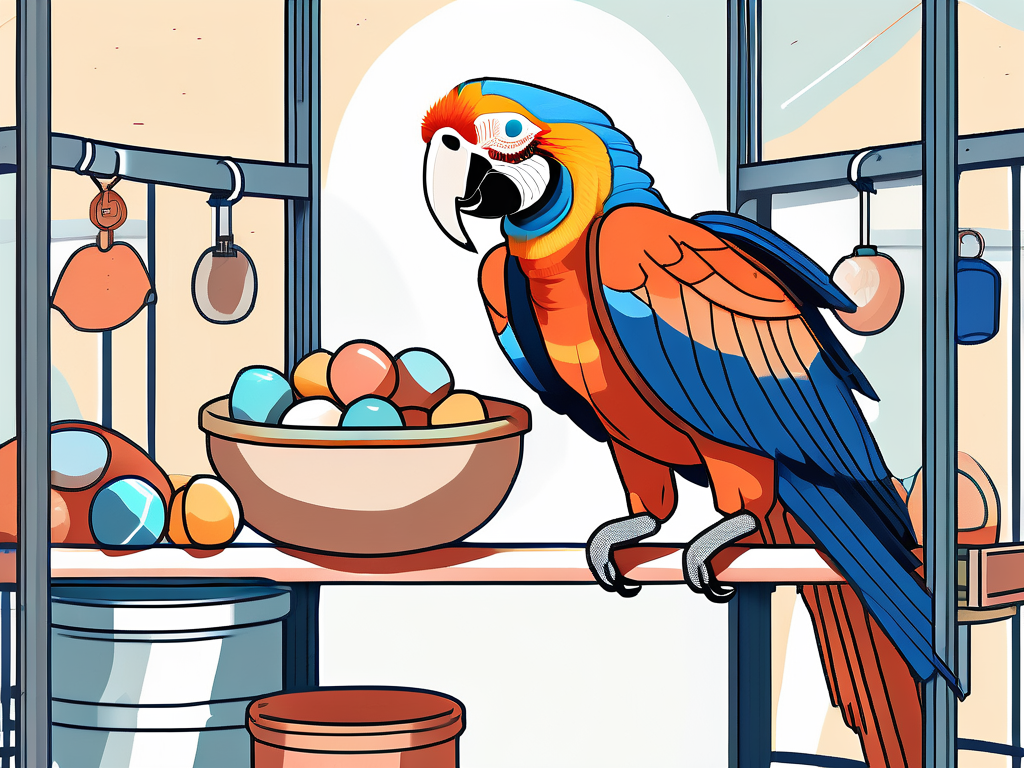
- A spacious, sturdy cage that allows for climbing and movement.
- Multiple perches of varying diameters made from safe wood.
- Toys designed for large birds that encourage foraging and play.
- Food and water dishes that are easy to clean and refill.
- High-quality pellets, seeds, and supplements as a balanced diet.
By gathering these supplies beforehand, you provide a welcoming environment for your Camelot Macaw, helping them adjust to their new home with ease. It’s also wise to invest in a playstand or a designated play area where your macaw can safely explore outside of their cage. This not only promotes physical activity but also strengthens the bond between you and your feathered friend. Consider adding a variety of textures and colors to their toys, as Camelot Macaws are known for their intelligence and curiosity, which can lead to hours of entertainment and mental stimulation.
Creating a Suitable Living Environment
Camelot Macaws thrive in environments that mimic their natural habitats. Providing a spacious cage is essential, but it’s equally important to create a stimulating environment outside of the cage. Set aside a safe area for them to explore, including perches and hanging toys, to keep them engaged.
Additionally, consider the location of their living space. The cage should be placed in a well-lit area, free from drafts, and away from excessive noise. However, it’s essential that the Camelot Macaw is part of the household activities to avoid feelings of loneliness, as these birds flourish in social settings. Incorporating a routine that includes interaction time, such as talking, training, or simply allowing them to sit on your shoulder, can significantly enhance their emotional well-being. Remember, these birds are highly social creatures and thrive on companionship, so the more time you spend with them, the happier they will be.
Understanding the Dietary Needs of a Camelot Macaw
The diet of a Camelot Macaw is crucial for their health and longevity. While these birds enjoy seeds, a diet primarily based on high-quality pellets is recommended. Pellets provide balanced nutrition and prevent selective feeding. In addition to pellets, fresh fruits and vegetables should be included to enhance their nutritional intake, offering vitamin-rich options like:
- Carrots
- Spinach
- Apples
- Bell peppers
- Blueberries
Ensure fresh water is available daily and be cautious of human foods that are toxic to birds, such as chocolate, avocado, and caffeine. It’s also beneficial to introduce a variety of foods gradually, as this not only helps in preventing digestive issues but also allows your macaw to develop a taste for different flavors and textures. Experimenting with different types of healthy treats, like nuts or cooked grains, can also be a delightful way to engage your macaw during training sessions. Remember, a well-fed macaw is a happy macaw, and a diverse diet can contribute significantly to their overall health and vitality.
Choosing the Right Camelot Macaw
Factors to Consider When Choosing a Parrot
When selecting a Camelot Macaw, consider your lifestyle and the responsibilities of bird ownership. These parrots require a significant amount of socialization and interaction. Thus, it’s crucial to evaluate your daily schedule and ensure you have ample time to devote to your feathered friend.

Additionally, research reputable breeders or shelters that prioritize the health and well-being of their birds. Observing the parrot’s behavior and even interacting with them prior to adoption can help determine if it’s a good fit for your household.
The Importance of Health Checks
Before finalizing the adoption, always conduct a health check. Consult with an avian veterinarian to assess the wellbeing of the Camelot Macaw. Look for clear eyes, clean nostrils, and smooth feathers, as these are indicators of a healthy bird. A thorough health assessment can prevent future complications and ensure you are adopting a thriving individual.
Understanding the Lifespan and Commitment
Camelot Macaws can live up to 50 years or more in captivity, which is a significant commitment. Prospective owners should consider their long-term lifestyle, as these birds require consistent care and companionship throughout their lives. A commitment to training, socialization, and health maintenance is vital to ensure a healthy and happy bond with your parrot.
Caring for Your Camelot Macaw
Daily Care and Maintenance
Daily care for your Camelot Macaw involves regular cleaning of the cage, providing fresh food and water, and ample time out of the cage for exercise and socialization. Monitoring their behavior and health daily will help identify any potential problems early on.
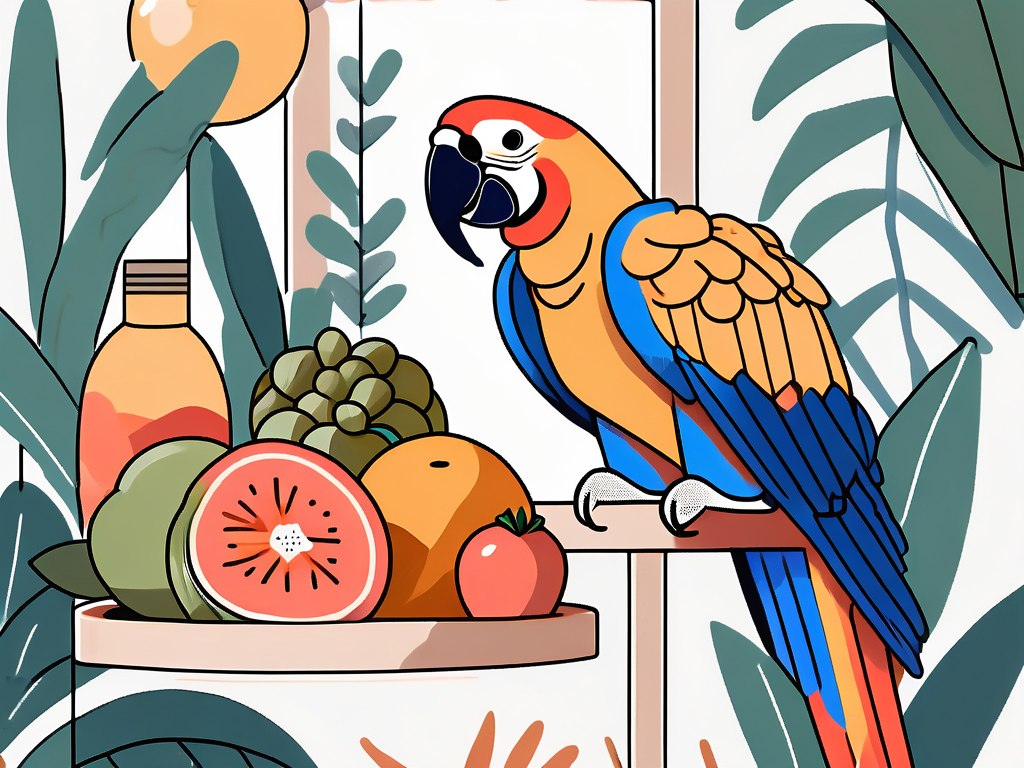
Additionally, spend quality time engaging with your parrot through playtime and training sessions. This interaction fosters a strong bond and keeps them mentally stimulated, which is essential for their well-being.
Training and Socialization Tips
Training a Camelot Macaw can be incredibly rewarding. Begin with basic commands like “step up” and “step down” to establish a good foundation for communication. Use positive reinforcement, such as treats and praise, to encourage desired behaviors.
Socialization is equally important. Introduce your Macaw to different environments, people, and other pets gradually to help reduce any fear or anxiety they may experience in new situations.
Common Health Issues and Prevention
While Camelot Macaws can lead healthy lives, they are susceptible to certain health issues. Common concerns include feather plucking, respiratory diseases, and nutritional deficiencies. Regular veterinary check-ups can help identify potential issues early.
Maintaining a balanced diet, providing enrichment through toys and activities, and ensuring a clean living environment are essential preventative measures. Always research and stay informed about the best practices for avian health to provide your Camelot Macaw with a happy, long life.
In conclusion, adopting a Camelot Macaw can be a delightful adventure filled with companionship and joy. By understanding their needs and investing time in their care, you can build a loving relationship that lasts a lifetime.



